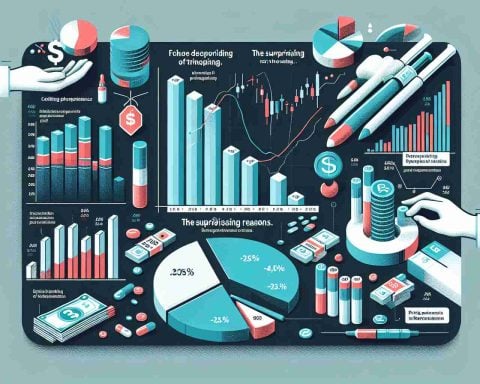- The Department of Transportation is reviewing the $7.5 billion National Electric Vehicle Infrastructure Formula Program, causing uncertainty for states.
- Plans for 500,000 charging stations may face delays as states need to revise proposals amid changes in guidelines.
- Ongoing projects will still be funded, but new initiatives are temporarily frozen, affecting the expansion of EV infrastructure.
- Tesla benefits from the situation with over $41 million in federal contracts for expanding its Supercharger network.
- Competition is intensifying among EV charging networks, particularly with the emergence of the Ionna network.
- Legal battles may arise as states seek compliance from the DOT under federal law regarding the program.
The ambitious vision of America’s electric vehicle (EV) future is hitting a snag. The Department of Transportation (DOT) has announced a review of the $7.5 billion National Electric Vehicle Infrastructure (NEVI) Formula Program, a key initiative funded by the 2021 Bipartisan Infrastructure Law. With plans for 500,000 charging stations across the country, this program aims to revolutionize transport—but now faces significant hurdles.
As the DOT pulls back on previous guidelines, states are left in limbo, forced to draft new proposals amidst bureaucratic chaos. This unexpected reversal means that while ongoing projects will still receive funding, new initiatives are frozen, leading to months of delays for states eager to expand EV infrastructure. Just when progress seemed on the horizon, the brake has been slammed.
Yet, in the shadow of these developments, Tesla emerges as a significant beneficiary, having secured over $41 million in federal contracts to develop its Supercharger network across 99 sites. With competition heating up—especially from the Ionna network, backed by multiple automakers—this funding freeze could reshape the landscape of EV charging in America.
As states rework their plans, the risk of legal battles looms, with assurances that the DOT must comply with federal law. The stakes are high, not just for automakers like Tesla but for the entire EV industry that relies on this critical infrastructure.
Key takeaway: While the vision for a robust EV future remains intact, the path forward just got clouded. Will legal action be the only way to clear the way for rapid EV infrastructure expansion? Stay tuned!
Charging Ahead: The Future of EV Infrastructure at a Crossroads
The ambitious vision of America’s electric vehicle (EV) infrastructure, powered by the $7.5 billion National Electric Vehicle Infrastructure (NEVI) Formula Program, is currently facing unexpected roadblocks. As the Department of Transportation (DOT) revises its guidelines for this critical initiative, new information and insights are emerging that could reshape the landscape of EV charging in the United States.
Pros and Cons of the Current EV Infrastructure Situation
– Pros:
– Funding Availability: Ongoing projects will still receive federal funding, which may facilitate partial progress for some states.
– Market Growth Opportunities: Companies like Tesla, which secured substantial contracts for their Supercharger network, are well-positioned to capitalize on this environment.
– Cons:
– Project Delays: New initiatives are currently frozen, leading to significant delays in the expansion of charging networks.
– Increased Bureaucracy: States are now grappling with revised guidelines, which could lead to confusion and further delays in project development.
Current Market Trends
The fallout from the DOT’s review of the NEVI program coincides with a rapid growth trend in electric vehicle sales and the need for an extensive charging network. As manufacturers continue to ramp up EV production, the demand for charging stations is projected to triple in the next five years. This presents both a challenge and an opportunity for the industry.
Insights into the EV Charging Competition
The competition in the EV charging space is heating up. Companies such as Tesla are expanding their Supercharger networks, while others like Ionna are supported by several automakers to create a diverse and competitive charging landscape. This competition could drive innovation and lead to better services for EV users, but it could also fragment the charging landscape if not managed properly.
Limitations of Current EV Infrastructure Initiatives
Despite the funding and ambition behind the NEVI program, there are limitations:
– Regulatory Challenges: The changing guidelines from the DOT could hinder states’ ability to quickly adapt and implement their charging infrastructure plans.
– Legal Uncertainty: With the risk of legal battles looming, the timeline for infrastructure rollouts may become even more unpredictable.
Key Questions Answered
1. What is the impact of the DOT’s review on existing EV projects?
– While ongoing projects will still receive funding, new initiatives are on hold, potentially stalling the expansion of the EV charging network across states.
2. How will Tesla benefit from the current situation?
– Tesla has secured over $41 million in federal contracts for developing its Supercharger network, positioning the company to further enhance its EV charging presence amid regulatory chaos.
3. What are the implications for other automakers entering the EV market?
– Automakers who are new to the EV market may face challenges in establishing a foothold in the charging infrastructure space due to the delays and uncertainties created by the DOT’s guidelines.
Future Predictions
Looking ahead, the resolution of these infrastructure issues and the DOT’s revised guidelines will be crucial for the growth of the EV market. Industry experts predict that as legalities resolve and states adapt, we may see accelerated growth in charging stations, but this could take considerable time. Additionally, the current situation may push for innovations in charging technology and strategies.
For more information on electric vehicles and related infrastructure, check out Energy.gov.












